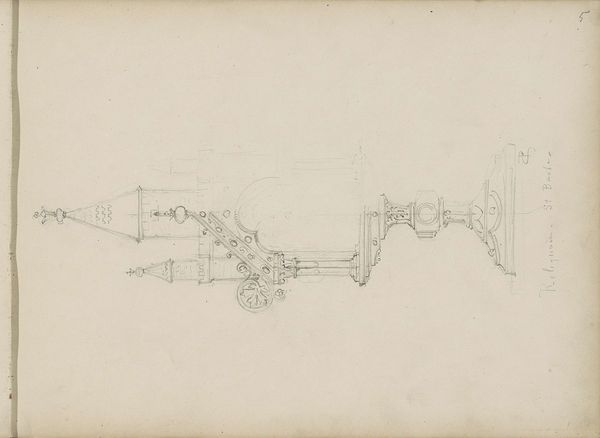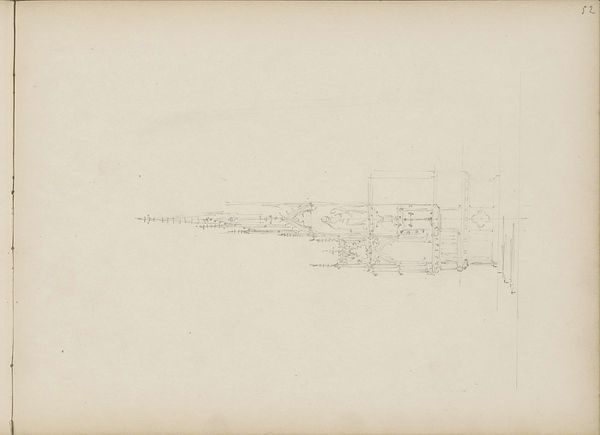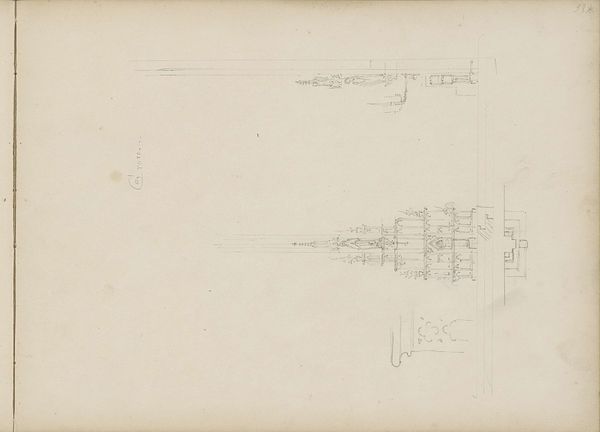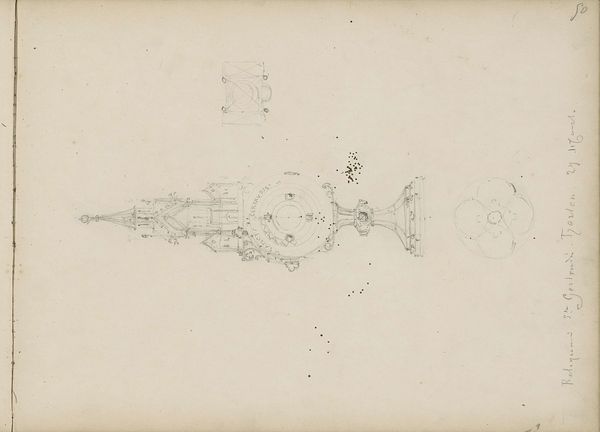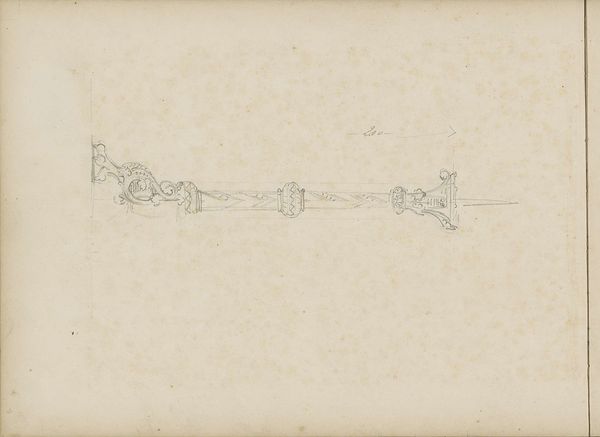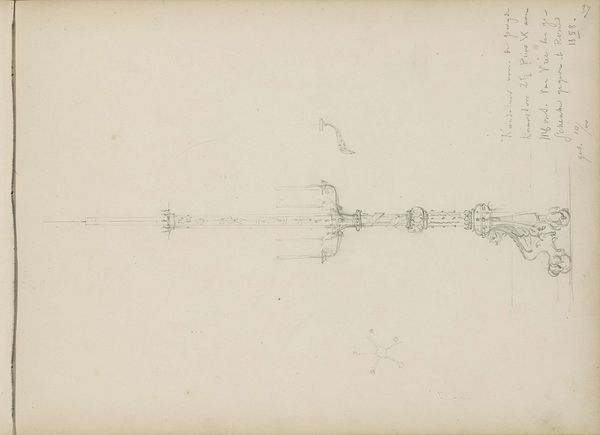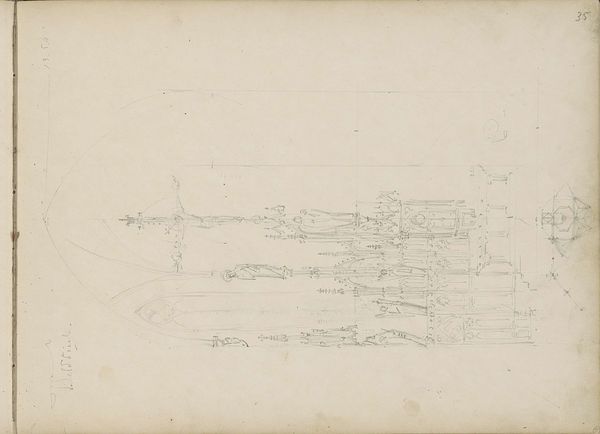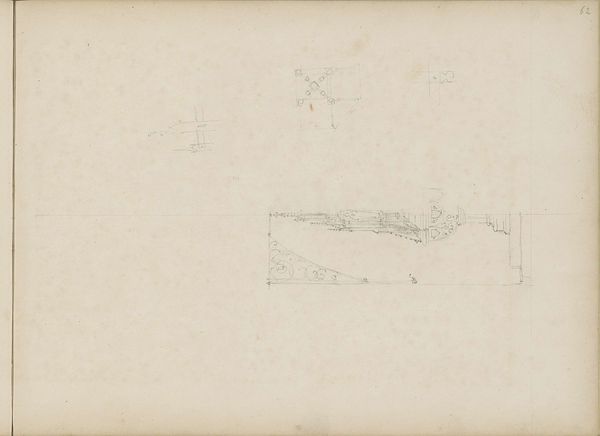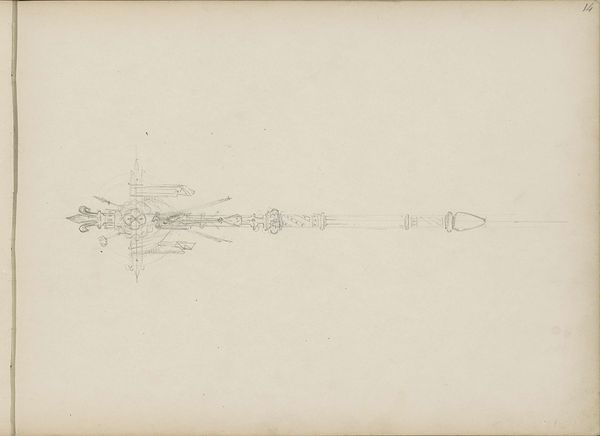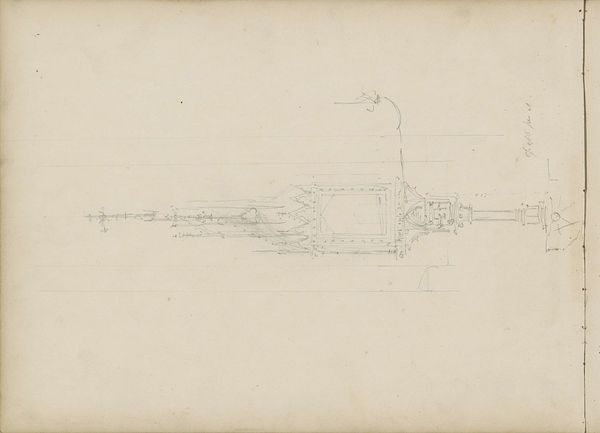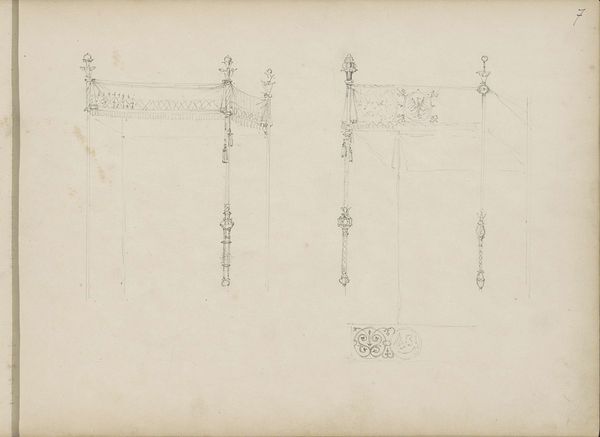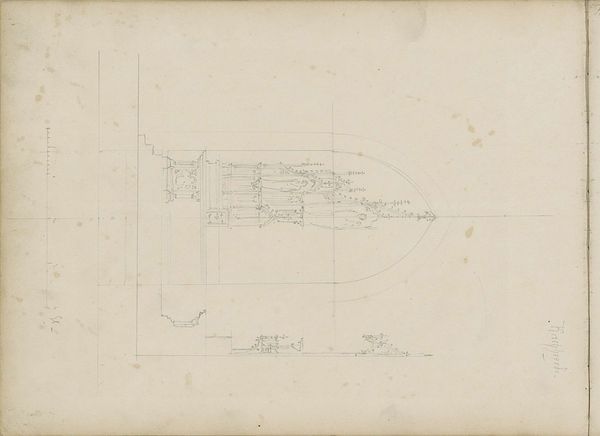
drawing, pencil, architecture
#
drawing
#
medieval
#
geometric
#
pencil
#
line
#
architecture
Copyright: Rijks Museum: Open Domain
Curator: Looking at this pencil drawing by Pierre Joseph Hubert Cuypers, created between 1857 and 1859 and entitled 'Theotheek,' I find myself contemplating its relationship to the larger artistic movements of the time, particularly the revival of medieval aesthetics. Editor: My first thought is how ethereal it seems, almost ghostlike. The lines are so delicate, hovering on the page. What kind of building is depicted? Curator: Well, understanding the context here, we need to realize that the Theotheek represents Cuypers’s deep interest in geometric architecture, and reflects a period when there was considerable interest in how religious institutions were visualized through design. We might explore the social function served by reviving historic forms through these visual models of medieval times. Editor: Exactly. This almost evokes the fragility of grand designs. It’s not just an architectural sketch; the fineness of the drawing emphasizes a sense of ambition weighed down by the artist's almost melancholic attention to detail, wouldn't you say? Is it just meant as technical design, or is there something of the visionary artist present, lamenting the changing role of religion? How would that reflect contemporary society and the intersection of the socio-economic classes involved? Curator: That's a great way of looking at it! If you place his drawing, the Theotheek, within a tradition of other architects producing images for cathedrals, churches, and libraries, we see that a particular cultural performance or staging goes with its presentation and production. In other words, architecture wasn't always about the technicalities, but about promoting societal ideals. Editor: This piece really highlights the ways historical artistic practices and modern philosophies inform each other, influencing how we understand both art and broader socio-cultural trends. It almost whispers from the past, don’t you think? Curator: Absolutely. Seeing it in this context allows us to reflect on the complex relationship between art, identity, and the historical narratives embedded within architectural renderings. The artist provides insight into those past moments that resonate so strongly today.
Comments
No comments
Be the first to comment and join the conversation on the ultimate creative platform.
